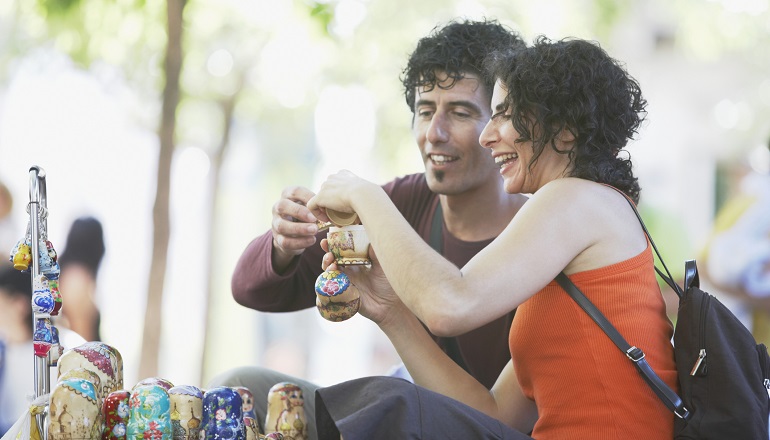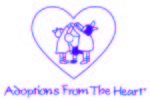We met our daughter in a remote town in Siberia called Khabarovsk—an eight-hour flight and seven time zones away from Moscow. She was 16 months old, and we were thrilled to become a family. Finally, the waiting was over! Except, it wasn’t.
The process required that we spend a month in Russia before we could take her home. We were able to visit her for a few hours a day, and there were legalities to take care of, but we still had many free hours. So we explored the town with our Russian travel group: a coordinator, a translator, and a driver.
As we learned about the Russian way of life, we realized that our daughter would never experience it. So we began to pick up mementos of the area. We purchased enough trinkets to give her one each year, through her 18th birthday.
Our daughter is now 11, and she loves receiving these mementos each year on Adoption Day. These are the gifts we’ve given her so far, and the ones we will give her as she grows.
[Instant eBook: How to Raise Adopted Children]
Year 1: Rooskee
Rooskee (“Russian”), a little black-and-white stuffed dog, flew with us to Russia. We offered him as a peace symbol to our daughter, and he was a comfort to her as we got to know each other. When the familiar Russian smells, sounds, and customs were no longer around, Rooskee was there, a trusted and loyal friend. After 10 years, he still holds a place in our daughter’s heart. He was her first best friend.
Year 2: Russian Fairy Tales
Our Russian team was eager to teach us about their culture, and they helped us buy our daughter’s future Adoption Day gifts. Our translator, Natasha, offered to interpret some classic Russian fairy tales, so that our daughter would grow up hearing stories from her heritage.
Year 3: Diary
When we decided to adopt, we began writing a diary for our daughter, and we continued writing throughout her first year at home. It begins with a letter explaining why we wanted to adopt, and it tells how she was born in our hearts. The kid-friendly diary (sensitive information is kept in a separate place) tells the highs and lows of the process, and has a daily account of our time in Russia. The diary shares a missing part of our daughter’s life story, and it is one of her favorite gifts.
Year 4: Matryoshka Doll
Perhaps the most common Russian souvenir, this wooden doll was a must-buy. We learned that “matryona” is a form of “mother,” and that the doll’s design recalls the peasant families from Russia’s past. Our daughter quickly claimed this as another favorite gift because it is uniquely Russian.
Year 5: Glass Figurines
The figurines of “Allie” (an alligator) and “Pluto” (the Disney character) represent the optimism and humor of the Russian people. As our daughter grows up, she will learn about Russia’s history and its people. While in Russia, we talked to many people who seemed optimistic, even if their futures seemed bleak. “Allie” and “Pluto” remind our daughter that there is a cheerful side to the culture.
Year 6: Russian Stories and Comic Books
While we were always open about our daughter’s adoption, this was the year that she became hungry for more information. These books showed her that kids in other countries are like her. Until this point, she had wondered whether she was more Russian or American, but she now proudly identifies herself as a Russian-American.
[Parent-To-Parent: Happy Adoption Day]
Year 7: Brooch and Eloise in Moscow
The miniature paintings on these brooches are by some of the region’s most talented artists. Eloise in Moscow represents our short time in the city. Our daughter enjoyed this book because she had seen pictures of Red Square in our videos and on TV. The book helped her say, “I know that place!”
Year 8: Hand-Carved Bear
One day, while exploring the area with our Russian team, we traveled outside of Khabarovsk to a small zoo. We saw a Himalayan bear and learned about the importance of the bear to the Russians—it is a hero in many Russian fairy tales. Our daughter liked hearing about the bear and admired the intricate hand carving.
Year 9: Elephant Necklace
Jewelry was everywhere in the stores in Khabarovsk, but we had difficulty finding a piece specially made for children. When we saw this hand-carved elephant on a leather tie, we knew it was the perfect first piece for our daughter, another show of craftsmanship from the region. This was her least favorite gift because it was not her style or color choice.
Year 10: Matryoshka Pin, Khabarovsk Book, and Russian Schoolbooks
Our daughter loves her Matryoshka doll, and this pin depicts the traditional toy. The book on Khabarovsk is full of pictures of the place we called home for a month. The schoolbooks teach numbers and the alphabet, and piqued our daughter’s interest in learning Russian. While we acknowledge her Russian past, we are letting her decide how much of it she wants to explore.
Future Gifts
Birch Bark Boxes
We admired these boxes for their intricate carvings. One of the boxes shows the coat of arms for Khabarovsk. We learned that Russians had used these decorative boxes to store grain, dried fruit, and, to our surprise, even liquids.
Amber Jewelry
Amber is prevalent throughout the country, and is very popular in Khabarovsk. The jewelry will give our daughter a more subtle connection to Russia.
Russian Dictionary and Money
While most of our days were spent with our team, we did venture out on our own for groceries and meals. Some Russians spoke a little English, but we also had to use our trusted dictionary.
Videos of Cartoons
These are cartoons that Russian friends taped for us. While we were there, we watched similar black-and-white shows, as well as Sesame Street translated into Russian.
Birch Bark Picture
Russia’s national tree is the birch, and we saw birch trees in the forests of Khabarovsk.
Amethyst
We found amethyst in the shops in Khabarovsk, on one of our last shopping trips, and we were told that this gem came from the region. Our daughter will choose a piece from this gemstone to design a piece of jewelry for herself. It will be a gift that the three of us will always share. Our daughter will be 18 and ready to begin her own life, but we will always remember our Russian connection. It is how we became a family.






